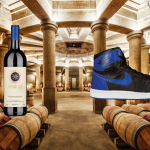
Cantina Antinori: a true example of Wine Architecture
Made in the evocative Tuscan landscape by Archea Associati
March 11th, 2018
Bargino, San Casciano.
A few kilometers from Florence, in the middle of the most classic and suggestive Tuscan landscape where Chianti is grown, on the side of a hill, two thin incisions appear.
They are the discreet sign that reveals the presence of a work of contemporary architecture that harmoniously dialogues with the surrounding territory.
This is the winery of the Chianti Classico Marchesi Antinori, new headquarters of the historic Florentine House producing fine wines, a structure that merges with the earth, extending horizontally, even below ground level.
The project, conceived by Archea Associati, is a gigantic tribute to wine that occupies about 12 hectares of total area, for which
40,000 cubic meters of cement, 3.5 million kilos of metal reinforcements and about 7 years of work were used.
The materials used? Cooked, wood, corten and glass.
The internal spaces of the building are designed to create a gravitational cellar, ie proceeding from top to bottom to facilitate transfers and displacements of the product.
So this geomorphological experiment almost invisible from the outside, hosts on the first horizontal floor, in a sequence of internal courtyards illuminated by circular holes, the office spaces and the exhibition areas, where there are a museum, an auditorium, a library and the rooms tasting that offer the possibility of direct sales. Upstairs there are the bottling and storage areas, flanked by the restaurant and the vinsanteria.
The heart of the cellar? Obviously, the barrique hall, a series of 75-meter-long vaulted galleries that hold the barrels facing the tasting rooms and corten-like theater stages from which they can watch the work of workers and oenologists.
Another iconic element is the roof garden, intended for educational vineyards grown with the typical variety of Chianti, Sangiovese, along with others such as Canaiolo, Malvasia nera or Mammolo.
Are you curious?





























































